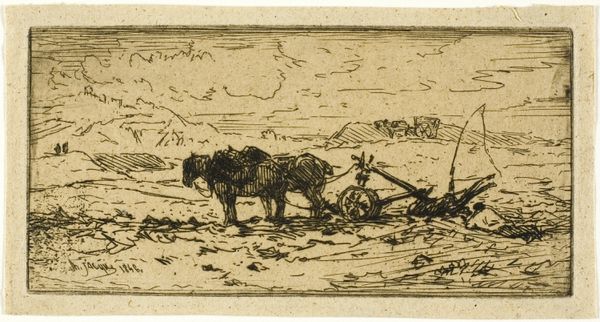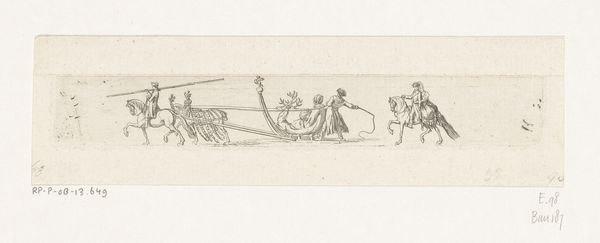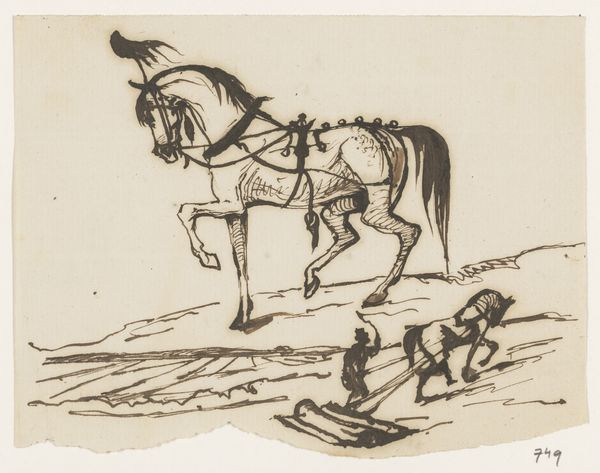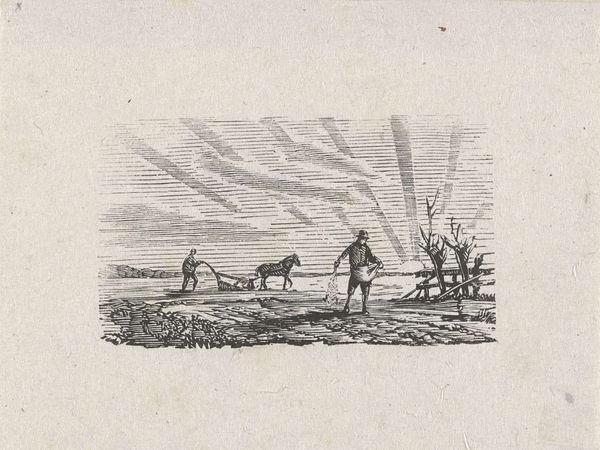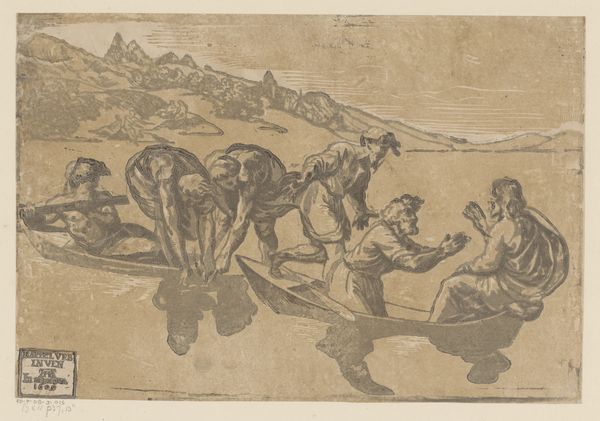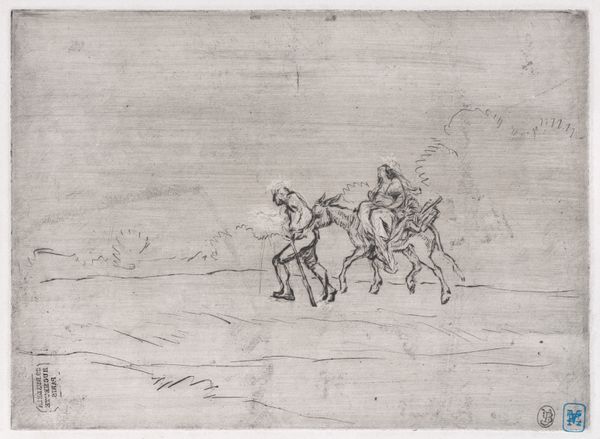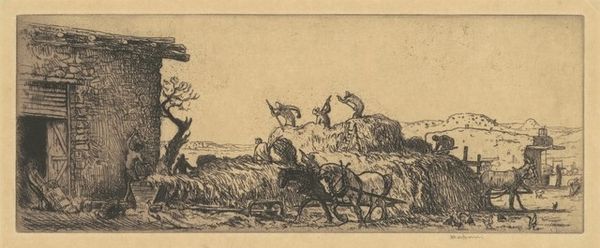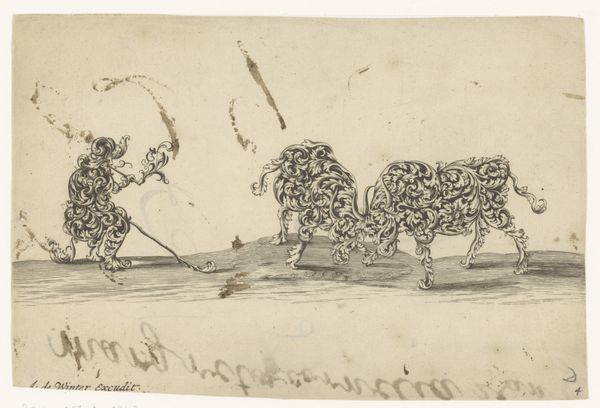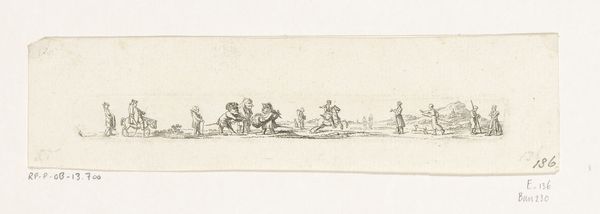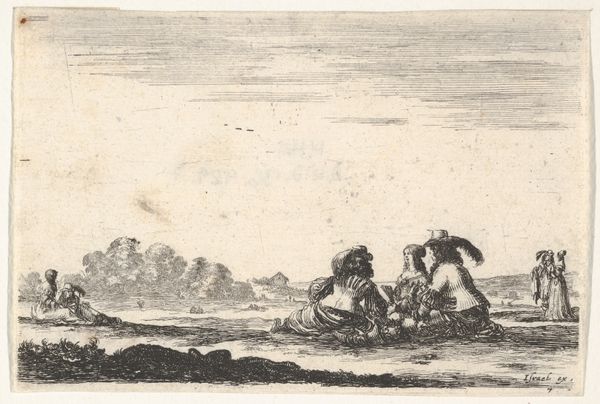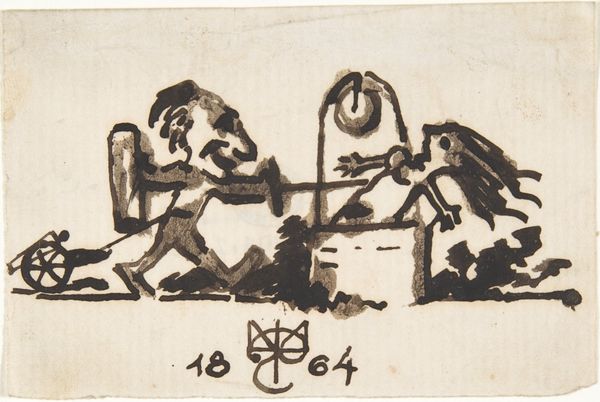
#
light pencil work
#
quirky sketch
#
pen sketch
#
incomplete sketchy
#
personal sketchbook
#
ink drawing experimentation
#
pen-ink sketch
#
sketchbook drawing
#
sketchbook art
#
initial sketch
Dimensions: height 18 mm, width 53 mm
Copyright: Rijks Museum: Open Domain
Editor: We're looking at "Zittende man tussen boompjes in silhouet" by Isaac Walraven, created sometime between 1696 and 1765. It's a quirky little sketch. The silhouettes remind me of cut paper. What jumps out at you? Curator: The stark use of silhouette immediately directs my focus to the artist’s process. Look closely – what tools do you think Walraven employed to achieve these dark shapes and delicate lines? This wasn't some spontaneous act of creation, but one heavily reliant on readily available and affordable material processes for widespread consumption. Editor: Well, the description does mention "light pencil work," and other tags suggest ink or pen sketches. But why do you emphasize the affordable and available nature of art-making? Curator: Because understanding the means of production unlocks a deeper understanding of the artwork’s social context. Think about the accessibility of pen and ink versus, say, oil paints in the 18th century. This accessibility democratized image-making to an extent. Also, look at how Walraven economizes his line; nothing is superfluous, every stroke serves a function. How does this conscious frugality inform your understanding of this image? Editor: It does feel economical! Like the artist is preserving a feeling with a bare minimum of mark-making. This reminds me, however vaguely, of other labor intensive art. Curator: Precisely! While seemingly simple, this print hints at the repetitive processes of labor within the larger printing industry that provided livelihoods and distributed cultural capital to the masses. Seeing how Walraven transforms a single scene into readily reproducible product makes me think more about artistic production. It is more that simply seeing a "pretty" drawing! Editor: I hadn't considered it that way before. I'm now considering labor conditions when thinking about this "personal sketchbook" image! Curator: Exactly, seeing the process changes the final read. This makes me hopeful about expanding the role of accessibility to inform material explorations.
Comments
No comments
Be the first to comment and join the conversation on the ultimate creative platform.


